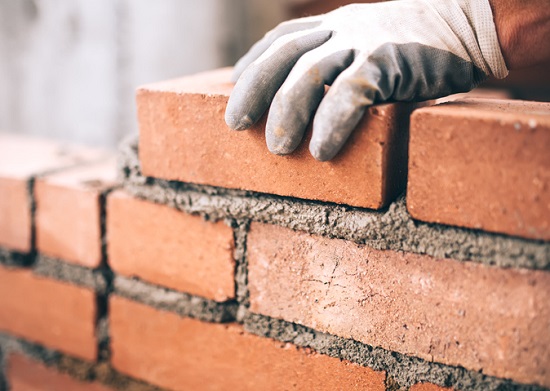Laying Bricks in Cold Weather
Reading time: 5 minutes
The weather can make a huge difference to building projects, most obviously when working outside. Laying brickwork in cold or wet conditions can make it more difficult, leading to delays in completion and additional costs.
What happens to bricks in cold weather?
When it comes to bricks, the main thing to look out for is rain rather than the cold (although this is still an issue, which we’ll come on to later). This might seem odd, especially as facing bricks are made to handle all weathers - they’re able to absorb water and drain it out again. However, it’s prolonged exposure to moisture that causes damage to bricks, whether they’re left on site until ready for use, or part of a built wall.
Protecting loose bricks from rain is very important, so always keep bricks under plastic sheeting. This problem is made worse when temperatures drop to more extreme cold, as any moisture soaked into the brick can freeze. Frozen water expands, which can lead to cracking or chipping.
What’s the effect of cold on mortar?
As with brick, it’s the moisture that’s most likely to cause problems when mixing and using mortar. Very cold temperature causes moisture to form, which can make mortar freeze and expand. This in turn means the mortar will lose much of its bonding ability, as well as reducing its water resistance.
The lower the temperature, the bigger the problem as it takes cement longer to mix with water. The result of this is that mortar will take longer to set, affecting its strength. Again, because it’s likely to be weak, it can crack.
How cold is too cold to lay bricks?
A brick wall’s strength will be reduced if mortar is mixed and bricks are laid at temperatures under 4°C. In temperatures like this, effective heating must be provided to continue to work on building walls, otherwise it’s likely that work might need to be paused. If the temperature drops below 2°C the mortar won’t mix properly and it’s a good idea to stop the work. It’s better to cut your losses and wait until the temperature rises instead of wasting materials and time. However, facing bricks may be heated to stop the temperature of mortar dropping and set properly.
- How to Protect Masonry from Cold and Frost
- How Do You Stop Mortar from Freezing?
Building in cold weather is usually a little tricky, but there are methods to work around these challenges. It’s important to not take any unnecessary risks when working in low temperatures. Come back again for more advice on winter site safety, and other building help and advice.
Disclaimer: The information contained on this page is intended as an overall introduction and is not intended as specific advice from a qualified professional. Travis Perkins aims to avoid, but accepts no liability, in the case that any information stated is out of date.





